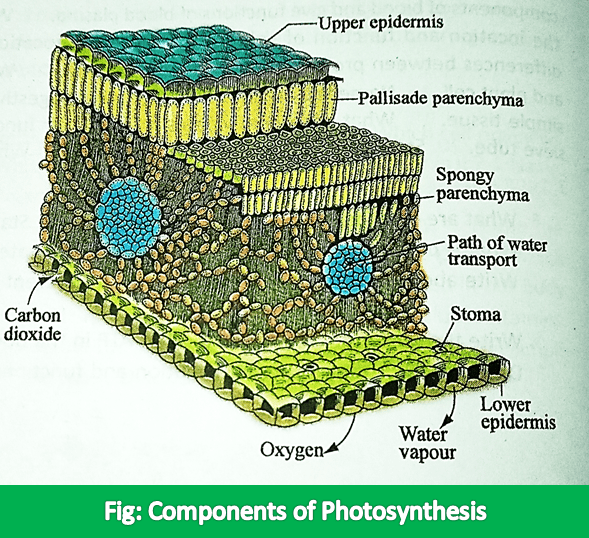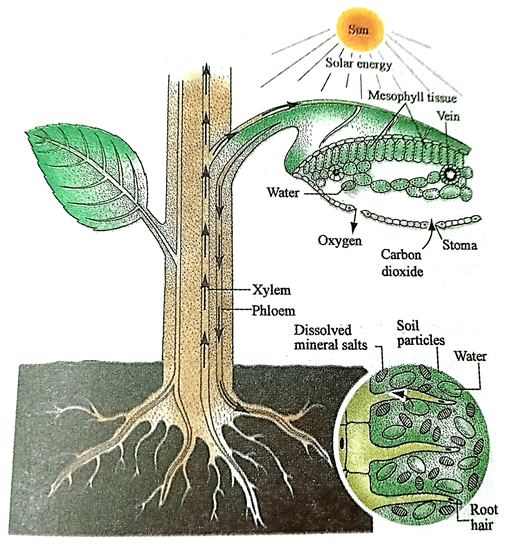Photosynthesis:
Photosynthesis is defined as an anabolic physiological process by which green plants prepare simple sugar with the help of solar energy, carbon dioxide, and water. The chemical reactions within the chlorophyllous cells release oxygen equivalent to the amount of absorbed carbon dioxide as a byproduct.
Process of Photosynthesis:
The process of photosynthesis occurs within the chloroplasts of the mesophyll cells of green leaves. Photosynthesis also occurs in the chlorophyllous tissue of green-colored young stem, calyx of flowers, phylloclade of cactus, fruit coat of young fruits, and aerial roots of the orchid. It may also occur in lower plants like algae, bryophytes, and photosynthetic bacteria. It even occurs in the cells of certain protozoa like Chrysamoeba and Euglena.

Components of Photosynthesis and their sources:
The major components of photosynthesis are carbon dioxide, chlorophyll, sunlight, and water.
1. Carbon Dioxide: It is one of the important raw materials required for photosynthesis. In this process, 6 moles of carbon dioxide utilized to produce 1 mole of glucose.
2. Water: Water is another important component of photosynthesis. Synthesis of one mole of glucose requires 12 moles of water. However, during this process, 6 moles of water produced as a by-product.
3. Chlorophyll: It is the main pigment required for photosynthesis. The process of photosynthesis doesn’t take place in those parts of the plant body where chlorophyll is absent, like the root. This pigment is of five types such as – Chlorophyll a, b, c, d, and e,
Amongst these only chlorophyll a(C55H72O5N4Mg) is found in all lower and higher plants. It is deep green in color in comparison to others. The major elements present in chlorophyll are carbon (C), hydrogen(H), oxygen(O), nitrogen(N), and magnesium(Mg). If these elements (especially magnesium) are deficient in a plant, the chlorophyll can’t be synthesized properly or it gets destroyed.

4. Sunlight: It is perhaps the most important component of photosynthesis. The process of photosynthesis is strictly dependent on sunlight and doesn’t occur at night. But a plant can only utilize 0.1 to 0.2% of the total sunlight, it encounters in the entire year. The sunlight consists of highly energized invisible solar particles called photons, which excite the chlorophyll molecules, and thereby the process of photosynthesis can continue.